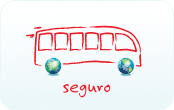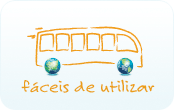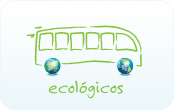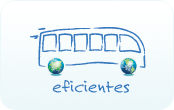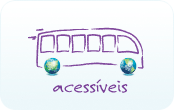|
Home  Políticas Inteligentes Políticas Inteligentes
Bus Rapid Transit (BRT)Changing urban mobility patterns at low cost | | | Bus Rapid Transit (BRT) - a modern transit system with the flexibility of buses, and the speed, comfort and reliability of rail - enjoys growing popularity of around the world. BRT provides faster, greener, safer and more efficient service than an ordinary bus. "These systems operate like a surface subway, say BRT advocates, but cost far less than building an actual metro." With its dedicated lanes, accommodating service areas, technologically advanced stations and GPS tracking systems, BRT offers a comprehensive mass transit service at a fraction of typical costs. In fact, for the amount of capital it takes to build a single rail line, localities can build multiple BRT lines. The Institute for Transportation and Development Policy (ITDP) executive director, Walter Hook, confirms BRT’s potential in cities where funding is scarce. “BRT will be an important option for transit systems in the future, especially in cities where transit demand is high and budgets are tight,” Hook says. | Due to its flexible service and low capital investments, BRT has found success around the world. In addition to the global enthusiasm for BRT is growing popularity in the U.S. There are currently five cities in the U.S., including Los Angeles and Cleveland, which use BRT as a part of their public transit system and eight to ten new BRT systems under consideration. Read article in The Wall Street Journal |
Brazil prepares for the World Cup 2014 with BRT SystemThe world’s most successful BRT, the “RIT” in Curitiba, Brazil, serves over 2 million passengers a day, transforming the city’s traffic. With an additional 2.98 million visitors expected to flock to Brazil for the 2014 World Cup, urban planners are grasping a golden opportunity to upgrade sustainable transport systems in the 12 host cities. In this nation of buses, that means special attention to state-of-the-art BRT systems, which provide fast, efficient, and affordable service. Federal, state and local governments in Brazil have already committed nearly $6.5 billion in urban transit investments for the purpose, a figure that is expected to increase with private investments. BRT systems provide optimised services with articulated or double-articulated buses that can carry around 15,000 passengers per hour, per lane, per direction. Brazil is planning nearly 300 miles of BRT corridors for the 12 World Cup cities. In Rio de Janeiro, a major World Cup venue, there will be at least 75 miles of BRT corridors and about 185 miles of improvements in bus routes, such as bus lanes, better signaling, better user information, rationalisation of bus lines and so on. These BRT projects are also a sustainable move, it will remain after the World Cup and after the Olympic Games in 2016. Similarly, the systems in Bogota and Teheran respectively serve 1.7 million and 1.4 million passengers daily by drawing commuters away from private vehicles and on to mass transit. Overall, last year saw the completion of 16 new BRT services, and now 49 new systems are also on the way. Read more on TheCityFix | 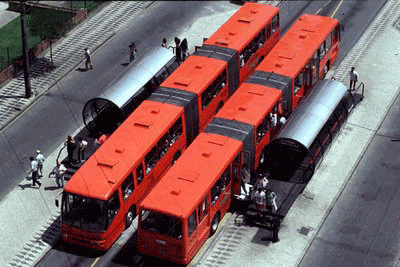 |
BRT in China satisfies 70% of Xiamen passengers and wins Sustainable Transport Award in GuangzhouAn online survey conducted by Xiamen Bus Rapid Transit (BRT) in May 2011, shows nearly 70% of citizens in Xiamen, China, rated the BRT service as “excellent” and “good”.
The survey which involved 3,000 people mainly focuses on four areas: station staff services, hardware facilities; amenities and rush hour congestion. The survey results showed that rapidity, punctuality and affordability are the main advantages of BRT transportation.
Among the facilities provided by the BRT, E-card charge stations scored the highest, followed by BRT ticket machines. In relation to the rush hour congestion, measures such as the capacity to add departure frequency and vehicle are highly praised. In the meantime, the city of Guangzhou, China, won the 2011 Sustainable Transport Award for its new world-class Bus Rapid Transit system that integrates with bike lanes, bike share and metro stations into a collective transport system. This award, presented by the Institute for Transportation Development Policy (ITDP) on 24 January 2011, goes to a city that made the most progress over the year to increase mobility, while reducing transportation greenhouse and CO2 emissions, and improving road safety. ”Today the Guangzhou BRT services over 800,000 riders daily and was built for about one-tenth the cost of the metro, with an average of one bus passing every 10 seconds in peak hours, it carries more passengers in a single direction than just about every metro lines in all of China, and more than triple any other BRT system in Asia. The system has resulted in 30 percent higher bus speeds, and reduced congestion along the corridor at the same time as vehicle volumes have increased, primarily due to the solving of severe problems of congestion at bus stops, and intersection signal improvements.” explained ITDP director of marketing and communications, Dani Simons The Guangzhou BRT was able to eliminate 50,000 tons of carbon dioxide in its first year, mostly due in part to residents choosing BRT over private vehicles, in addition to help cut congestion and improve traffic flow. ITDP Senior Program Director, Jessica Morris, explains that Guangzhou surpassed expectations: the BRT system, which opened in February 2010, carries 800,000 people per day, making it one of the largest in the world. Its interconnectivity with rail and bikes significantly helps make the city more livable. Other award nominees have also made significant progress in creating an efficient and sustainable transport system, such as: - Lima, Peru: its BRT is the first step towards creating an integrated citywide sustainable transport system
- Nantes, France: the integration of its bus light rapid transit with its tramway network presents a model of efficient coordination
- Tehran, Iran: the introduction of congestion charging complements the city’s expansion of its BRT and metro systems
Read article on National Geographic | 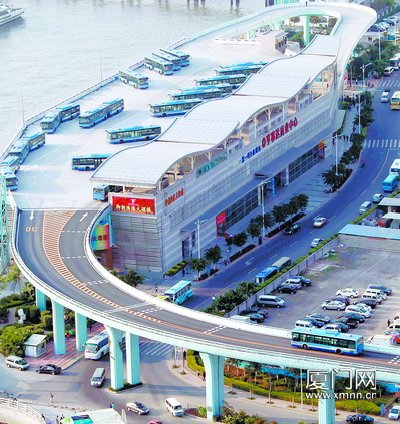 |
Argentina made the Smart Move with its first Bus Rapid Transit 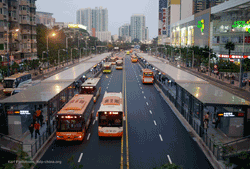 | Argentina’s first Bus Rapid Transit system was inaugurated by Mauricio Macri, the mayor of Buenos Aires, on 2nd June, marking its first day of operation. Government officials and the public speak of the tremendous impact this transit system will have in improving people’s lives. The new BRT system, called “Metrobús” has 21 stations and physically separated lanes that run in the middle of the street. As an extra safety measure, the Metrobús has elevated station platforms and features countdown clocks that notify riders of the next arriving bus on each platform to keep riders informed. | | The BRT will connect to two commuter rail stations on opposite sides of the city, forming a trip that takes 40% less time than before, ITDP reports. With the addition of the BRT to the city’s transport network, city officials expect the line to grow to an anticipated 100,000 daily riders, a 15 percent increase in ridership. City officials also expect the system to reduce fuel use by buses in the city by 30 percent, and therefore cut carbon emissions and improve air quality. “The implementation of Metrobus in Buenos Aires, the first BRT corridor in Argentina, represents significant progress in the development of urban transportation, allowing for an increased quality of life of more than 100,000 people,” said Macri. “Our main goal, as those responsible for urban planning, is to restore the quality of public transportation, for which the support of the W.J. Clinton Foundation and ITDP has been crucial in the process of development and implementation of a world-class BRT system. In the coming years, based on the success of this first phase, we plan to continue the expansion of the BRT network in the City of Buenos Aires.” “Road transportation accounts for 90% of all transportation emissions in Latin America, half of which are produced by passenger traffic,” said Stephen Crolius, director of the Transportation Program at the Clinton Climate Initiative. “Bus rapid transit systems play an important role in addressing those emissions as they create dedicated bus lanes across cities, providing millions of people with a more cost and time efficient solution to using cars—resulting in fewer emissions and improved air quality.” The system was built in just seven months, “showing the huge savings that BRT provides in construction time, cost and logistics when compared to a fixed rail system,” ITDP explains. The BRT comes as only one component of Buenos Aires’s efforts in creating a comprehensive transit network to its residents and visitors. “In a remarkably short amount of time the City has helped improve conditions for walking downtown, dramatically increased the availability of high quality bike lanes, and provided a public bicycle system,” said Andrés Fingeret, director of ITDP’s Argentina office. “And now Metrobús will add another high quality transportation option that will get residents where they need to go, quickly, with less pollution and without getting stuck in traffic.” |
|
